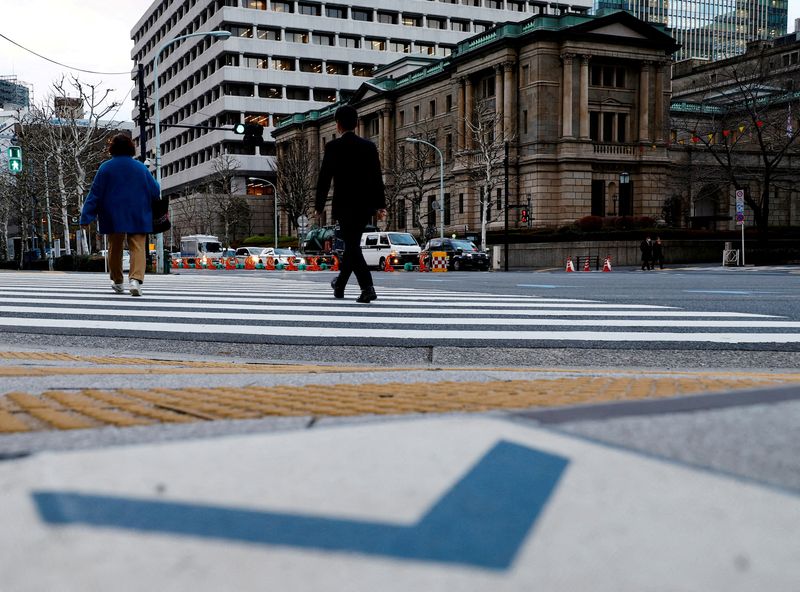By Leika Kihara
TOKYO (Reuters) - Many Bank of Japan policymakers saw the need to go slow in phasing out ultra-loose monetary policy with one board member saying the economy's health did not warrant rapid interest rate hikes, a summary of opinions at the bank's March meeting showed.
In making last week's historic decision to end negative interest rates, the board was divided on whether the economy was strong enough to weather the exit, the summary showed.
"Even if the BOJ ends negative rate policy, it would need to emphasize its cautious stance as the economy is not in a state where rapid interest rate hikes are necessary," one member was quoted as saying.
"It is important to clearly communicate ... that the changes in our monetary policy framework proposed at this meeting will not be a regime shift toward monetary tightening, but rather an effort to achieve our price target," another member said.
The BOJ ended eight years of negative interest rates and other remnants of its unorthodox policy last week, making a landmark shift away from its focus on reflating growth with decades of massive monetary stimulus.
The opinions shown in the summary underscore the BOJ's preference to move slowly in future interest rate hikes, and could keep the Japanese yen under pressure as investors focus on the still large gap between U.S. and Japanese interest rates.
At the meeting, some policymakers said recent data, such as bumper wage hikes offered by big firms, justified ending ultra-loose policy as sustained achievement of the bank's 2% inflation target was in sight, the summary showed on Thursday.
But several board members called for more scrutiny on whether wage gains will spread to smaller firms, and the extent to which expectations of rising labour costs were pushing up services prices, the summary showed.
"The virtuous cycle of rising prices and wages still can't be considered to have become more solid on a nationwide basis," one opinion showed.
The decision at the March 18-19 meeting to exit ultra-loose policy was made by a 7-2 vote with former academic Asahi Noguchi and ex-corporate executive Toyoaki Nakamura dissenting.
One member opposed ending yield curve control and negative rates simultaneously, stressing the need to keep supporting the economy by hold down borrowing rates, the summary showed.
Even those who favoured exiting ultra-easy policy stressed the need to proceed cautiously, with one member saying the BOJ can "spend plenty of time, and move slow but steadily" toward policy normalisation, the summary showed.
Despite the rate hike, the yen has plunged to three-decade lows against the dollar as markets expect the BOJ to take time raising rates again.
Underscoring its focus on preventing abrupt damaging spike in borrowing costs, the BOJ pledged last week to keep buying "broadly the same amount" of government bonds as before, and ramp up purchases in case yields rise rapidly.
At present, the BOJ roughly buys 6 trillion yen ($39.6 billion) worth of government bonds per month.

One member said the BOJ should allow long-term yields to move more flexibly by allowing the amount of its purchases to increase or decrease by about 1-2 trillion yen each from current levels, the summary showed.
($1 = 151.4300 yen)